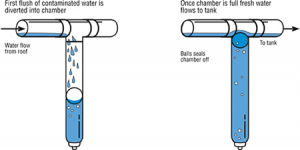This is Part 6 in the series “How to Build a Rainwater Collection System”. Click to see parts one, two, three, four and five.
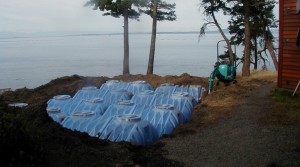 Are you concerned with the aesthetics of above ground water storage? Then underground storage may be right for you.
Are you concerned with the aesthetics of above ground water storage? Then underground storage may be right for you.
Underground storage tanks need to be structurally engineered to withstand the inward pressures of back filling and compacting. Most will need to be weighted down so ground water will not “float” the tank when empty. It is advised that a curtain drain be installed at bottom of excavation to allow excess ground water to drain away for the same reason.
Buried tanks can be fiberglass, plastic, and cement. Large sizes (over 2,000 gallons) tend to be fiberglass, while smaller plastic tanks (up to 2,000 gallons) can be manifolded together to achieve the desired capacity. Cement tanks should be lined with a poly liner and “mono poured” when constructed.
Other specialty tanks consist of modular which are may be buried and bladder or pillow tanks that can be placed in crawl spaces.
Check the box below to follow RainBank and stay informed of all things Rainwater Harvesting.

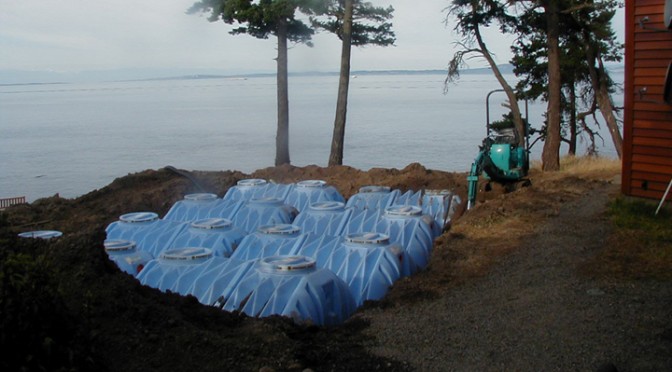
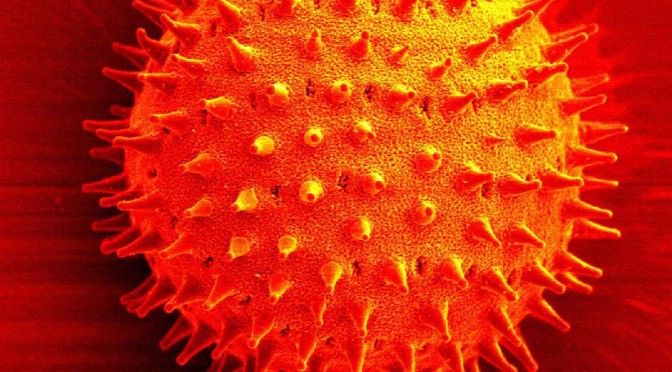
 After the first flush device, secondary screening is needed before raw rainwater enters the storage tank or cistern. A fine mesh stainless steel screen should be ordered with your rainwater storage tank. Be sure each tank that is receiving rain from a downspout has a screen. The screen is easily removed for periodic cleaning.
After the first flush device, secondary screening is needed before raw rainwater enters the storage tank or cistern. A fine mesh stainless steel screen should be ordered with your rainwater storage tank. Be sure each tank that is receiving rain from a downspout has a screen. The screen is easily removed for periodic cleaning.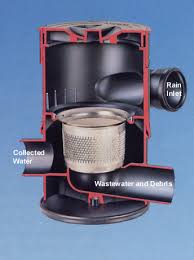 A vortex filter for underground transfer from gutter to a sump tank is a good way to remove debris before rainwater is pumped to the cistern. Only periodic cleaning of the vortex filter is needed. Vortex filters should meet the roof size requirements to work effectively and installed per the manufacturer’s recommendations. A vortex filter can be used instead of a first flush device when mounted between the gutter and the cistern.
A vortex filter for underground transfer from gutter to a sump tank is a good way to remove debris before rainwater is pumped to the cistern. Only periodic cleaning of the vortex filter is needed. Vortex filters should meet the roof size requirements to work effectively and installed per the manufacturer’s recommendations. A vortex filter can be used instead of a first flush device when mounted between the gutter and the cistern.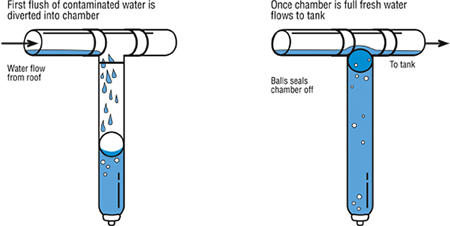
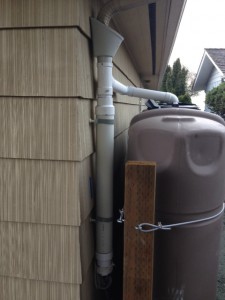 A first-flush diverter helps keep your rainwater harvesting system clean by enabling the removal of dust, other debris, and any fecal matter that collects on your roof and in your gutters between rainfalls, so it is flushed out at the very beginning of the water collection process.
A first-flush diverter helps keep your rainwater harvesting system clean by enabling the removal of dust, other debris, and any fecal matter that collects on your roof and in your gutters between rainfalls, so it is flushed out at the very beginning of the water collection process.